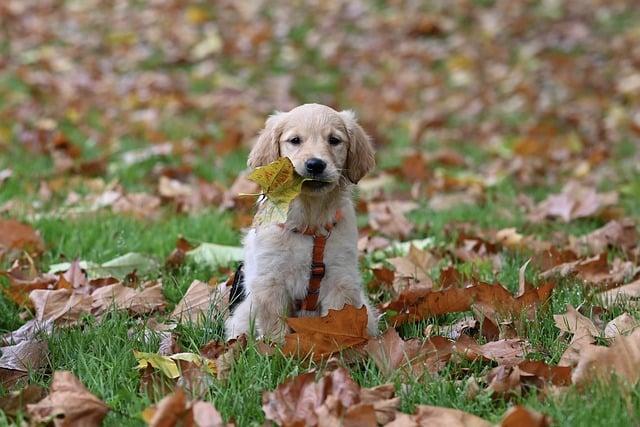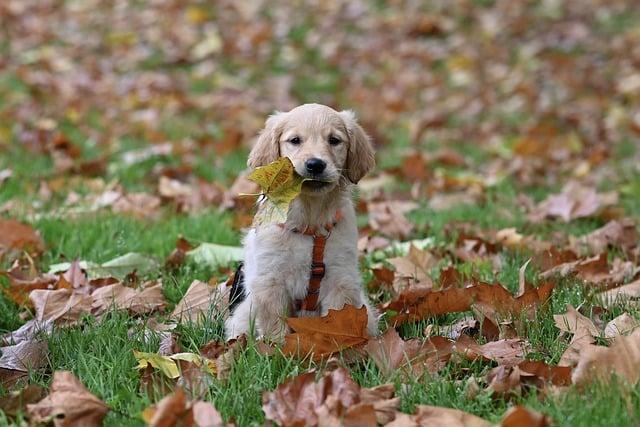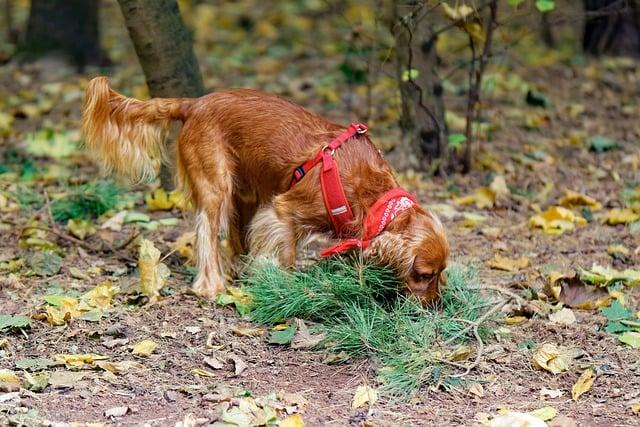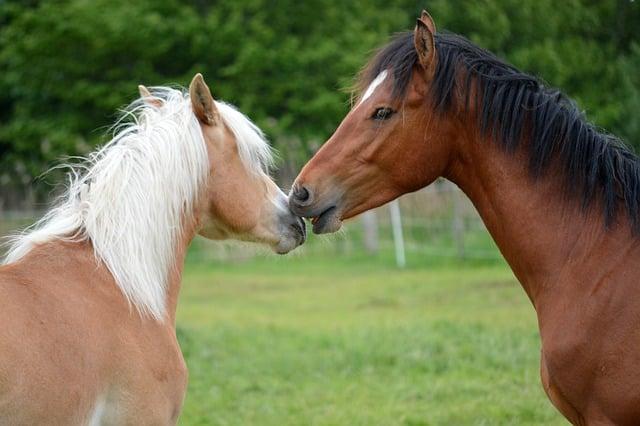In a cozy living room, Bella, a golden retriever, cradles her plush toy, a worn-out teddy bear, as if it were her own puppy. She gently nudges it with her nose, licks it affectionately, and even growls protectively when her owner approaches. Observing this, one might wonder: does Bella truly believe her toy is her baby? Research shows that dogs often exhibit nurturing behaviors towards their toys, mirroring maternal instincts. This bond not only enriches their emotional world but also highlights the depth of their intelligence and capacity for love. So, next time you see your dog with their favorite toy, consider the possibility that they see it as more than just a plaything—it’s a cherished companion.
Contents
- Understanding the Maternal Instincts in Dogs and Their Attachment to Toys
- The Psychological Benefits of Toy Attachment for Your Dogs Well-Being
- Recognizing Signs of Affection: How to Interpret Your Dogs Behavior Towards Her Toy
- Enhancing Playtime: Recommendations for Choosing the Right Toys to Foster Healthy Bonds
- Q&A
Understanding the Maternal Instincts in Dogs and Their Attachment to Toys
Dogs are known for their deep emotional connections, and one of the most fascinating aspects of this bond is their attachment to toys. When a dog treats a toy as if it were a puppy, it can be a reflection of her innate maternal instincts. This behavior is not just a quirky habit; it serves several important functions in a dog’s life. By nurturing a toy, your dog may be expressing her need to care for something, fulfilling her instinctual drive to protect and nurture.
Many dogs exhibit behaviors that mimic maternal care, such as carrying, grooming, and even nursing their toys. These actions can be particularly pronounced in female dogs, especially those that have experienced motherhood. The act of cradling a toy in their mouth or gently pawing at it can evoke a sense of comfort and security, both for the dog and the toy. This nurturing behavior can also help alleviate anxiety, providing a sense of purpose and emotional stability.
Moreover, the attachment to toys can be a way for dogs to express their emotions. Just as a child might form a bond with a favorite stuffed animal, dogs can develop strong attachments to their toys. This connection can be reinforced through playtime, where the dog engages in activities that simulate hunting or retrieving. Such interactions not only strengthen the bond between the dog and her toy but also enhance her overall well-being by providing mental stimulation and physical exercise.
Understanding this behavior can help pet owners foster a more enriching environment for their dogs. Providing a variety of toys that cater to different instincts—such as chew toys, plush toys, and interactive puzzles—can satisfy your dog’s need for nurturing and play. By recognizing the significance of these attachments, you can better support your dog’s emotional health and ensure she feels secure and loved in her home.
The Psychological Benefits of Toy Attachment for Your Dogs Well-Being
When observing your dog’s attachment to her favorite toy, it’s easy to dismiss it as mere playfulness. However, this bond can have profound psychological benefits that contribute significantly to her overall well-being. Dogs, like humans, thrive on emotional connections, and a cherished toy can serve as a source of comfort and security. This attachment can help alleviate anxiety, especially in stressful situations such as thunderstorms, fireworks, or changes in the household environment.
Moreover, the act of nurturing a toy can stimulate your dog’s natural instincts. Just as a mother dog cares for her puppies, your dog may engage in similar behaviors with her toy, which can enhance her sense of purpose and fulfillment. This nurturing behavior can lead to increased confidence and a more balanced emotional state. By providing a safe outlet for these instincts, you’re not only enriching her life but also fostering a deeper bond between the two of you.
Additionally, toys can serve as a valuable tool for mental stimulation. Engaging with a beloved toy can keep your dog’s mind active and help prevent boredom, which is crucial for her mental health. When dogs are mentally stimulated, they are less likely to engage in destructive behaviors, leading to a more harmonious living environment. The joy and satisfaction derived from play can also release endorphins, promoting a sense of happiness and reducing stress levels.
the emotional support that comes from a strong attachment to a toy can be particularly beneficial during transitional phases in your dog’s life. Whether it’s moving to a new home, welcoming a new family member, or experiencing the loss of a companion, having a familiar toy can provide a sense of stability. This emotional anchor can help your dog navigate changes with greater ease, ultimately contributing to her resilience and overall happiness.
Recognizing Signs of Affection: How to Interpret Your Dogs Behavior Towards Her Toy
Understanding your dog’s behavior towards her toy can reveal a lot about her emotional state and attachment. When she carries her toy around, gently nudges it with her nose, or even sleeps with it, these actions may indicate a strong bond. Dogs often exhibit nurturing behaviors, such as licking or cuddling their toys, which can be interpreted as a sign of affection. This mimics the way they would care for their puppies, suggesting that your dog sees her toy as a companion or even a surrogate baby.
Another behavior to watch for is how your dog reacts when her toy is out of reach. If she whines, barks, or becomes visibly anxious, it may indicate that she feels a sense of loss or separation. This emotional response can be similar to how she would react if she were separated from her littermates. Additionally, if she brings her toy to you, it could be her way of seeking validation or sharing her joy, much like a child showing off a prized possession to a parent.
Pay attention to the way your dog plays with her toy. If she engages in gentle play, such as carrying it around or softly shaking it, this can signify affection and care. On the other hand, if she tends to be rough, it might indicate that she views the toy more as a prey item than a companion. Understanding these nuances can help you interpret her feelings and strengthen your bond with her.
Lastly, consider the context in which your dog interacts with her toy. Does she seek it out during stressful situations, such as thunderstorms or when meeting new people? If so, this behavior can be a coping mechanism, showing that she finds comfort in her toy. Recognizing these signs can help you better understand your dog’s emotional needs and enhance her sense of security, ultimately leading to a happier and healthier pet.
Enhancing Playtime: Recommendations for Choosing the Right Toys to Foster Healthy Bonds
When it comes to selecting toys that can enhance your dog’s playtime and strengthen your bond, it’s essential to consider their individual personality and preferences. **Interactive toys** are a fantastic choice, as they encourage engagement and mental stimulation. Look for options that require your dog to solve puzzles or manipulate objects to access treats. This not only keeps them entertained but also fosters a sense of accomplishment, which can deepen the emotional connection between you and your furry friend.
Another important factor is the **material and durability** of the toys. Dogs can be tough on their belongings, so opting for high-quality, non-toxic materials is crucial. Look for toys that are designed for your dog’s size and chewing habits. For instance, if you have a strong chewer, consider rubber or nylon toys that can withstand rigorous play. This not only ensures safety but also promotes longer-lasting play sessions, allowing for more shared experiences and bonding time.
Incorporating **social play** into your dog’s routine can also enhance your relationship. Toys that facilitate play between you and your dog, such as fetch balls or tug ropes, encourage interaction and teamwork. These activities not only provide physical exercise but also reinforce trust and companionship. Engaging in play together can help your dog view you as a leader and a partner, strengthening the emotional ties that bind you.
Lastly, don’t underestimate the power of **variety** in your dog’s toy collection. Rotating toys can keep playtime fresh and exciting, preventing boredom and encouraging exploration. Introduce new textures, sounds, and shapes to stimulate your dog’s curiosity. By providing a diverse range of toys, you not only cater to your dog’s evolving interests but also create opportunities for shared adventures, ultimately enhancing the bond you share.
Q&A
-
Do dogs see their toys as babies?
While dogs may not perceive their toys as actual babies, they often exhibit nurturing behaviors towards them. This can be attributed to their instinctual drive to care for and protect, similar to how they would treat their own puppies.
-
Why does my dog carry her toy around?
Carrying a toy can be a sign of affection and attachment. Dogs often form bonds with their toys, treating them as companions, which can provide comfort and security, especially in stressful situations.
-
Is it healthy for my dog to treat her toy like a baby?
Yes, it can be healthy! This behavior can stimulate your dog’s mental and emotional well-being. Engaging in nurturing play can enhance their social skills and provide a sense of purpose.
-
Should I encourage this behavior?
Encouraging your dog to care for her toys can be beneficial. It promotes positive play and can strengthen your bond. Just ensure that the toys are safe and appropriate for her to avoid any potential hazards.
while your dog may not perceive her toy as a baby in the human sense, her nurturing behavior reflects deep emotional bonds. Understanding this can enhance your connection, fostering a more enriching environment for both of you. Embrace her instincts!

大家好,我是彼得潘,專業的手法身體治療師。我喜歡探索和研究各種主題,並透過與人工智慧的合作分享專業、實用、有趣的文章。我們定期進行人工審核,以確保內容的準確性。如果您發現文章中有任何不準確的地方,請隨時與我們聯繫,我們會及時糾正。您可以透過 [email protected] 與我們聯繫。



